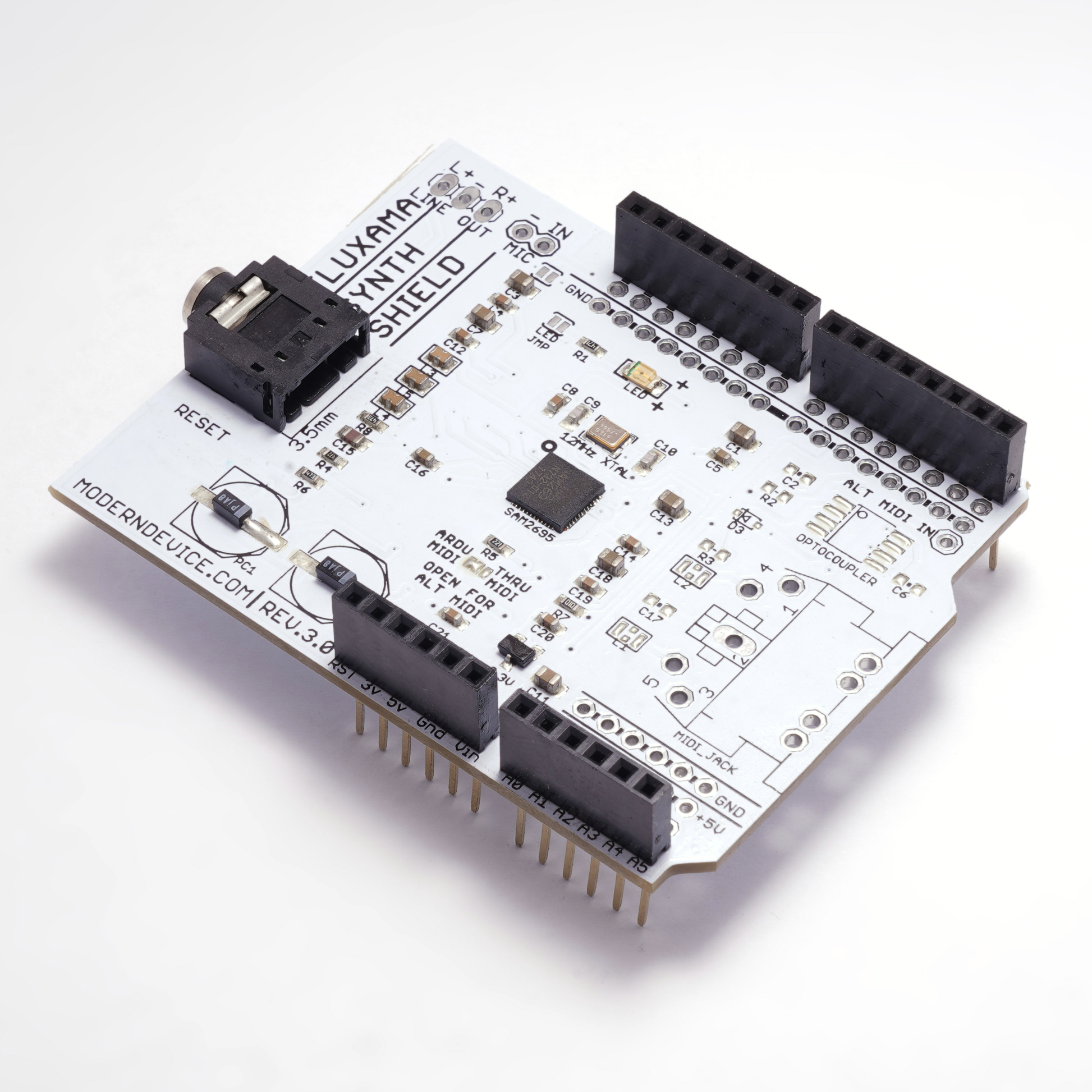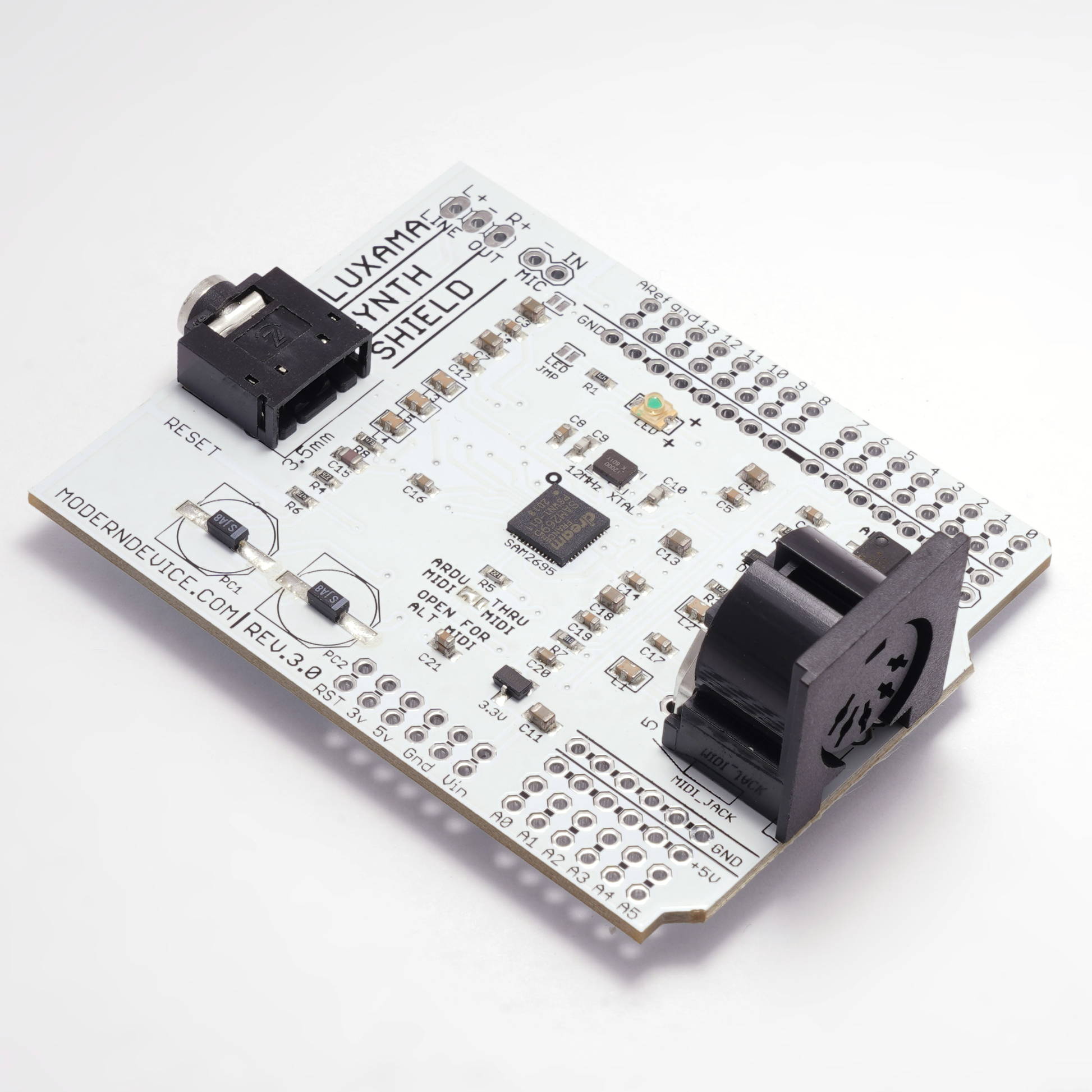Fluxamasynth Shield v.3
SKU: MD0300Couldn't load pickup availability
Share
This is an updated version of the 64 voice polyphony synth shield for Arduino. Note that previous versions of the shield used the SAM2195 chip from Dream Sound Synthesis; since they discontinued that product we updated the Fluxamasynth to use the SAM2695. Version 3 of the shield has a few more parts but has much better filtering and a neat microphone input. We also added an optional 5-pin DIN jack and MIDI-spec circuit for MIDI Thru (see variants).
The Fluxamasynth is a programmable synthesizer in an Arduino-friendly shield form factor. When I first showed it to Paul his reaction was “you’ve got an embarrassment of riches there.” and he’s right. The SAM2695 was intended for battery powered keyboards or portable Karaoke machines, but I’m sure you can use and abuse the Fluxamasynth in all sorts of new and interesting ways. Here are a few suggestions:
- Make your own MIDI instrument with unconventional analog sensors
- Create algorithmic compositions
- Use it in a homebrew pinball machine to generate music and sound effects
- Build an unusual percussion device
- Augment an analog instrument with a Fluxamasynth-based hyperinstrument
The example code shows an example of scoring a long composition for the Fluxamasynth: an implementation of In C by Terry Riley. The Fluxamasynth has a built-in wavetable with 128 general MIDI sounds and an additional set of 128 variations and dozens of percussion sounds. It can play music in 64-voice polyphony without effects or 38 voices with effects. Here are some additional features:
- 64-voice polyphony (without efffects)
- 32-voice polyphony with effects
- 14 bits of pitch bend range
- Access to fine and coarse tuning in cents
- Access to low level wavetable parameters
- Stereo line level output
- Master volume and per-channel volume control
- 4-band Equalizer
- Chorus, flange, delay effects
- 8 Reverb effects
- Spatial effects
The ATSAM2695 chip that does all the work is hooked up to the serial transmit (TX) line of the microcontroller; making music is as easy as sending a set of MIDI-formatted bytes to a software serial port on pin 4. You can program the Fluxamasynth with the Arduino IDE and the Modern Device Fluxamasynth library. See the Quick Start guide for a complete example. You’ll need an Arduino, Freeduino, BASIC STAMP or some other microcontroller to use with this shield, there are many in the shop, see our new Educato if you like to solder. The Fluxamasynth comes with loose headers, pre-soldered headers are optional. Please note that the option without the MIDI Jack does not come with any of the additional components. Other resources:
- Fluxamasynth library for Arduino IDE; supports Arduino boards, ESP32, and Feather variations
- Fluxamasynth Library Reference
- Quick start guide
- The latest version of the Fluxamasynth library on Github
- ATSAM2695 datasheet
- PDF of the board design
- PDF of the schematic
- A link to a users site that parses midi files and a nice video
Please be aware: Due to current fluctuations in part availability, lead times may vary on certain products




